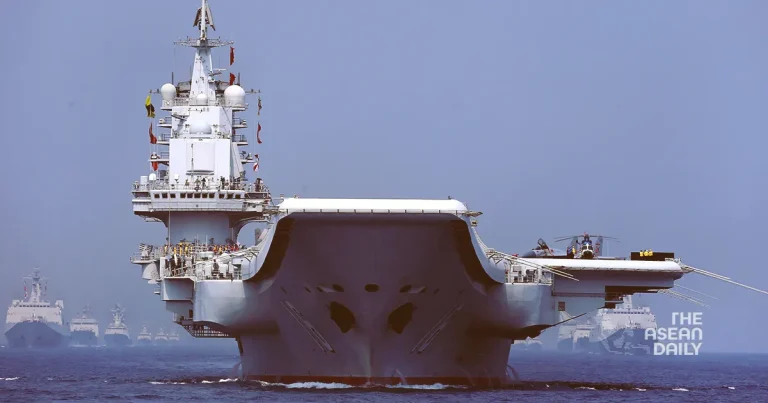15-7-2024 (MANILA) A senior Philippine Navy official has suggested that China’s aircraft carrier programme still requires “decades” to reach full operational capacity. The remarks, made by Rear Admiral Roy Vincent Trinidad, offer a rare glimpse into Manila’s perception of Beijing’s naval prowess and have been interpreted by some as a subtle challenge to China’s maritime ambitions.
Trinidad’s comments came in response to queries about the recent deployment of China’s aircraft carrier Shandong in waters off the Philippine coast. The 70,000-tonne vessel, one of three in China’s fleet, was observed conducting training exercises in the strategically significant Bashi Channel last week.
“While they are more advanced than us, it will be a long time before they reach the operational level of their aircraft carriers,” Trinidad stated, emphasising that the People’s Liberation Army Navy (PLAN) is still in the nascent stages of carrier-based warfare.
The rear admiral’s assessment aligns with the views of several defence analysts. Jose Antonio Custodio, a fellow at the Consortium of Indo-Pacific Researchers, concurred with Trinidad’s stance, noting that China has experienced “several mishaps” with its newly acquired carriers and is still “decades away from matching” the capabilities of established naval powers like the United States and United Kingdom.
These comments come against a backdrop of escalating tensions in the South China Sea, where China’s assertive territorial claims have led to confrontations with Philippine vessels. A recent incident at Second Thomas Shoal saw Chinese coast guard ships forcibly blocking a Philippine Navy resupply mission, resulting in injuries to Filipino sailors.
Despite the apparent provocative nature of Trinidad’s remarks, some experts view them as a calculated move to ease domestic concerns. Dr Sherwin Ona, an associate professor of political science at De La Salle University in Manila, suggested that the statement was intended to “allay fear and panic” over China’s naval activities in the region.
The Philippine Navy’s stance also reflects the country’s broader maritime defence strategy. Manila has been implementing its Comprehensive Archipelagic Defence Concept (CADC), which focuses on protecting the nation’s exclusive economic zone (EEZ) and littoral areas. Dr Ona emphasised that while the Philippine Navy may not match China’s naval tonnage, it is developing capabilities tailored to its specific mission requirements.
However, challenges remain for the Philippine Navy in effectively safeguarding its vast maritime territory. Abdul Rahman Yaacob, a research fellow at the Lowy Institute, highlighted the need for Manila to bolster its surface fleet, both in terms of numbers and capabilities, to maintain a persistent naval presence throughout contested waters.
As tensions persist in the South China Sea, Trinidad’s comments underscore the complex dynamics at play in regional maritime security. While acknowledging China’s technological advancements, the Philippine Navy appears keen to project confidence in its own strategic position and capabilities.
The coming years will likely see continued naval modernisation efforts by both China and its regional neighbours, as countries vie for influence and control in these disputed waters.




